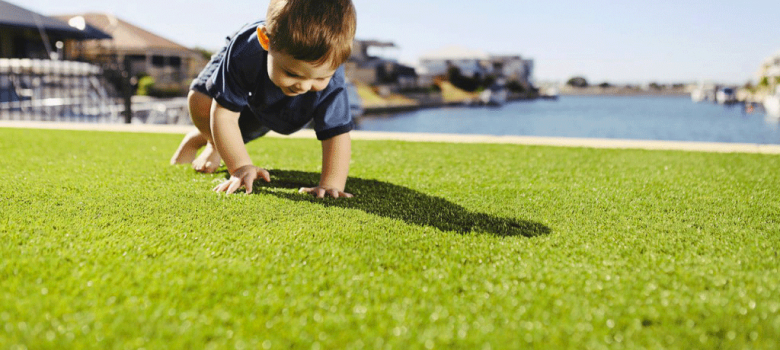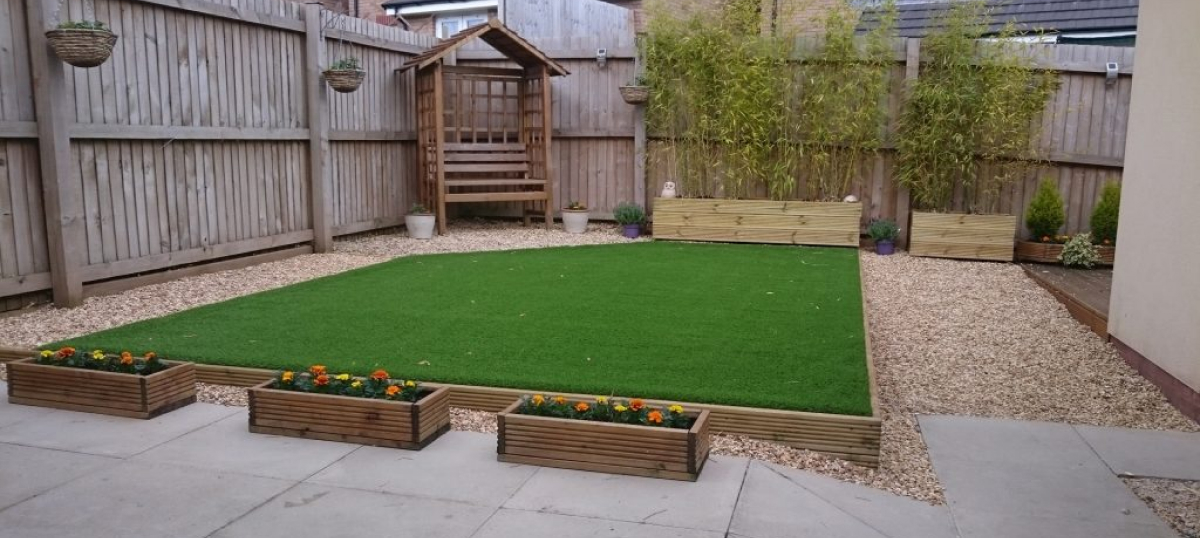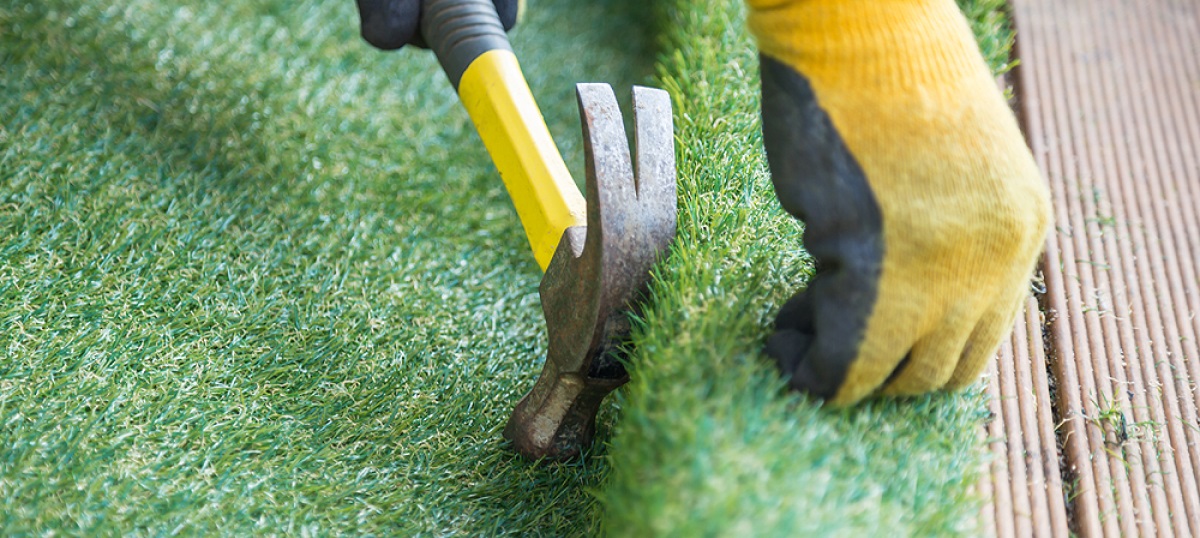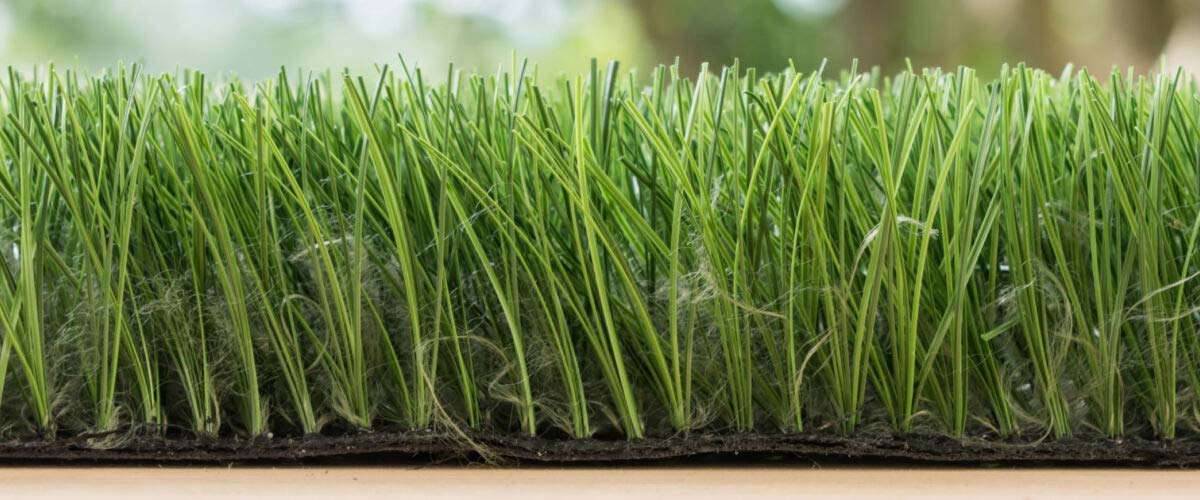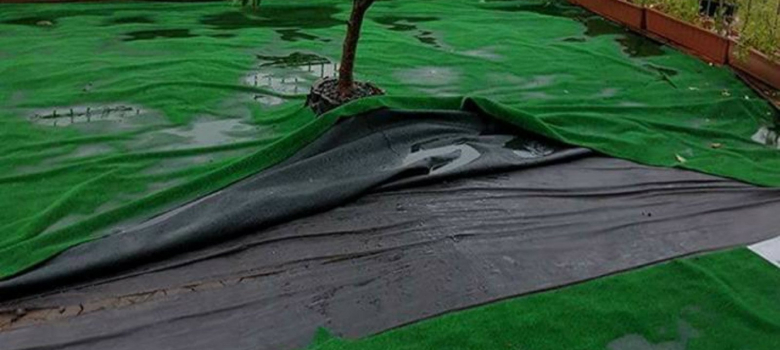Artificial turf offers a low-maintenance alternative to natural grass, providing a lush green lawn without the need for mowing, watering, or fertilizing.
However, as with any product, there are concerns about its safety and environmental impact. One of the most pressing questions in Perth and other cities is whether artificial grass is toxic.
In this article, we’ll explore the potential toxicity of artificial grass, what measures you can take to ensure a safe and enjoyable outdoor environment and everything that you need to know to make an informed decision.
The Composition of Synthetic Grass
Artificial lawn is typically made from a combination of synthetic materials, including polyethylene, polypropylene, and nylon.
These materials are known for their durability and resistance to UV radiation, making them suitable for outdoor use. Infill materials, such as silica sand or rubber crumbs, are often added to provide stability and cushioning.
Chemicals in Synthetic Turf
One of the primary concerns regarding the toxicity of artificial grass is the presence of chemicals in its composition.
While the materials used in synthetic lawns are generally considered safe, there can be variations in the manufacturing process and the quality of the materials used. Some products may contain trace amounts of potentially harmful chemicals, such as lead or heavy metals.
Lead is a particular concern, as it has been used in the past as a stabilizer in PVC materials. However, due to growing awareness of the health risks associated with lead exposure, many manufacturers have transitioned to lead-free materials.
It’s essential to research the specific product you’re considering and ensure that it meets safety standards and regulations.
Artificial Turf Considerations
Health Risks and Exposure
The potential health risks associated with artificial turf are primarily related to exposure to chemicals and infill materials.
Infill materials like rubber crumbs have been a subject of concern due to their association with potential health issues. Some studies have suggested a link between exposure to rubber infill and various health problems, including skin irritation and respiratory issues.
However, it’s important to note that these concerns have not been definitively proven, and more research is needed to establish a clear connection.
In terms of lead exposure, it’s essential to choose products that are certified as lead-free. Children are more vulnerable to lead exposure, so if you have kids, it’s especially important to ensure the safety of the artificial lawn you install in your yard.
Environmental Considerations
While fake grass doesn’t require water, it does have an environmental footprint associated with its production and disposal. Manufacturing synthetic turf involves the use of energy and resources, and disposal can be problematic as it is not biodegradable.
However, when evaluating the environmental impact, it’s essential to consider the long-term benefits.
By eliminating the need for regular lawn maintenance, synthetic grass can save water and reduce the use of fertilizers and pesticides. Over time, these savings can contribute to a more sustainable and eco-friendly landscape.
Bonus Tips for Astro Turf Maintenance
1. Regular Cleaning and Debris Removal
Synthetic turf is relatively low-maintenance compared to natural grass, but it still requires some upkeep.
Regular cleaning and debris removal are essential to prevent the buildup of dirt, leaves, and other organic materials on the surface. These can create an ideal environment for mould and bacteria to grow, potentially causing health concerns.
To maintain a clean and safe artificial lawn, follow these steps:
- Sweep regularly: Use a broom or a leaf blower to remove leaves, twigs, and debris from the surface of your synthetic grass. This prevents organic matter from breaking down and accumulating.
- Hose down occasionally: To remove dust and pollen, hose down your synthetic lawn occasionally. This will also help keep it looking fresh and vibrant.
- Spot clean as needed: If you notice spills or stains, clean them promptly with a mild detergent and water. Rinse thoroughly to remove any residue.
2. Proper Drainage and Avoiding Standing Water
One of the significant advantages of artificial grass in Perth’s climate is its ability to drain quickly, reducing the risk of water pooling. However, proper drainage maintenance is crucial to ensure your lawn remains safe and functional.
Check for areas where water might accumulate, such as low spots or areas with inadequate slopes. If you notice standing water, you may need to adjust the base or add drainage solutions like gravel or drainage pipes to redirect excess water.
3. Regular Grooming and Brushing
Over time, fibres can become compacted due to foot traffic and external elements.
To maintain the lush appearance of your lawn and ensure its safety, regularly groom and brush the grass. This process helps keep the fibres upright, promoting proper drainage and preventing the growth of mould and bacteria.
Use a stiff brush or broom to gently sweep against the grain of the fibres. Avoid using metal brushes, as they can damage the synthetic grass.
4. Infill Material Considerations
The infill material you choose can impact its safety and longevity.
Infill materials like silica sand and rubber crumbs provide stability and cushioning, making your lawn safer for activities and play.
However, it’s essential to periodically check and replenish the infill as it can settle over time, affecting the grass’s performance.
If you have concerns about the potential health risks associated with rubber infills, consider alternative infill options like organic infills made from coconut fibres or cork. These alternatives are often deemed safer and more environmentally friendly.
5. Regular Inspections
Perform routine inspections of your artificial grass to identify any issues that may require attention. Look for signs of wear and tear, seams coming apart, or areas where the grass may have lifted.
Addressing these issues promptly can prevent safety hazards and extend the life of your synthetic lawn.
Embracing the Green Revolution: Perth’s Artificial Grass Unveiled
Artificial grass in Perth can provide a safe, low-maintenance, and environmentally friendly alternative to natural grass.
While concerns about toxicity and environmental impact exist, selecting the right product, free from harmful chemicals, and adhering to proper maintenance practices can help mitigate these concerns.
By following a regular maintenance routine that includes cleaning, debris removal, proper drainage, grooming, and infill maintenance, you can enjoy the benefits of artificial grass while ensuring its safety and longevity.
Artificial grass can enhance the aesthetics of your outdoor space, conserve water, reduce the use of chemicals, and provide a comfortable and safe area for recreation and relaxation.
With the right care, your synthetic lawn can thrive in Perth’s climate for years to come, making it a valuable investment for both your home and the environment.
Install your turf the right way with Evergreen Synthetic Grass
Evergreen Synthetics has over 24 years of experience providing synthetic turf to customers throughout Perth and Western Australia. We also guarantee all of our installations so you never have to worry about the quality or longevity of your selected turf.
To get started with your project, just call us on 08 9303 2130 or request a free quote online.

